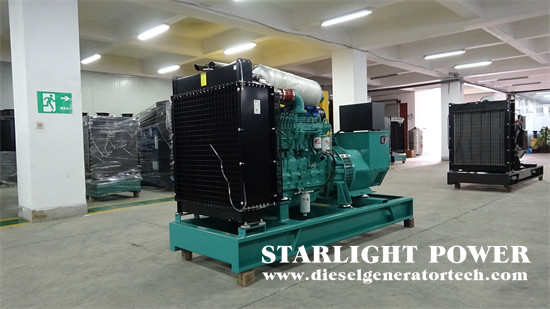A diesel generator set, equipped with NTA855-C630 diesel engine, was operated after overhaul. The initial running in operation was normal. After a period of time, it was found that the radiator water level rose significantly. After inspection, a large amount of diesel oil entered the radiator. Check the oil pan and ensure that the lubricating oil is normal.

Through analysis, it is believed that the possible main reasons are:
1. There are pores or cracks between the diesel duct and water channel of the cylinder head.
2. The copper sleeve of the fuel injector inside the cylinder head is damaged or deformed. The NTA855-C360 diesel engine adopts a PT fuel supply system, and the PT fuel pump supplies diesel to the PT injector through the diesel channel in the cylinder head. The cylinder head has both oil and water channels, as well as diesel channels. When working, the pressure of diesel is higher than that of water (the pressure of diesel in diesel is 0.8~1.2MPa, and the pressure of water is less than 0.6MPa). Once there are pores or cracks on the cylinder that connect the water channel and diesel channel, diesel will enter the water channel. In addition, the upper and lower ends of the fuel injector copper sleeve are in close contact with the cylinder head. Generally, when installing the copper sleeve, special tools must be used for expansion to seal it with the cylinder head. The outer periphery of the copper sleeve is connected to the water channel. If the copper sleeve is deformed or ruptured, the O-ring seal may be damaged, which may also cause the diesel channel to be connected to the water channel, causing diesel to enter the radiator.
After analyzing the cause, a pneumatic test was used for inspection. Firstly, remove the oil inlet and return pipes, block the oil return pipes, and inject 0.8MPa gas into the oil inlet ports of the 6th and 6th cylinder heads using an air pump. It is found that the water in the radiator is clearly overflowing outward; Next, inject 0.8MPa gas into the oil inlet of the 3rd and 4th cylinder heads, and it was found that no water overflowed from the radiator. From this, it can be preliminarily determined that there may be a malfunction in the 5th and 6th cylinder heads. The copper sleeves of the fuel injectors for the 5th and 6th cylinders were severely deformed and cracked, and the O-ring seal was damaged. Replace the copper sleeve and O-ring seal, conduct a pneumatic test, and confirm that the diesel channel and water channel are blocked. After installation and testing, troubleshoot the problem.
The main cause of the malfunction is incorrect installation of the copper sleeve or excessive pressure during the installation of the fuel injector. When replacing and installing the copper sleeve, the maintenance personnel of the diesel generator set should use professional installation tools instead of directly pressing the fuel injector, which may cause the copper sleeve to not be installed in place and damage the copper sleeve. When installing the fuel injector, be careful not to tighten the fixing bolts of the fuel injector too much. Tighten according to the required torque.
As a professional diesel generator manufacturer, we always insist on using first-class talents to build a first-class enterprise, create first-class products, create first-class services, and strive to build a first-class domestic enterprise. If you would like to get more information welcome to contact us via [email protected].
Copyright © Guangxi Dingbo Generator Set Manufacturing Co., Ltd. All Rights Reserved | Sitemap
Update cookies preferences